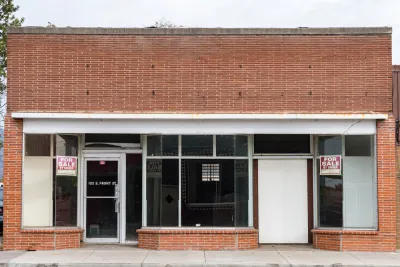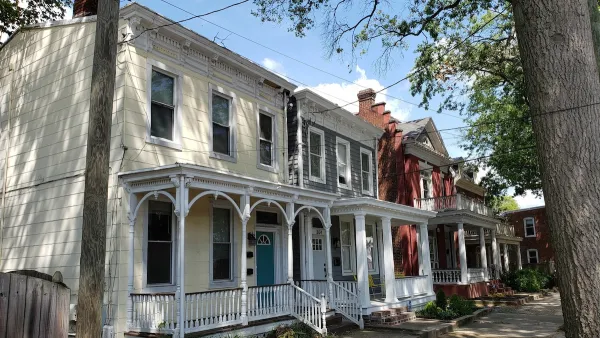Just three percent of Black households own commercial real estate, making it more difficult for Black entrepreneurs to establish businesses and build wealth.

According to an article by Tracy Loh and Andre Perry in Bloomberg CityLab, the racial gap in property ownership is just as stark in commercial real estate as in homeownership. “Only 3% of Black households own commercial real estate, compared with 8% of white households, and their holdings are much smaller — valued at just $3,600 on average, compared with nearly $34,000 for white households,” according to a Brookings report.
This matters because “Nonresidential commercial real estate generated $512 billion in revenue in 2020. What’s more, racial disparities in commercial property ownership impede Black entrepreneurship, since most Americans who start businesses use their personal wealth — chiefly the equity tied up in property.” As the article explains, “This disparity leaves Black Americans with less capacity to establish and grow their firms — and their wealth.”
The authors also note that property in Black neighborhoods is often undervalued, putting owners in those areas at a disadvantage. “ This costs commercial property owners some $171 billion in aggregate wealth,” according to the Brookings analysis.
“The way to end this cycle is to diversify the owners of commercial real estate as well as change the rules that guide investment.” The authors point to Chicago-based TREND, a social enterprise dedicated to changing the landscape of commercial property ownership by facilitating more equitable ownership models. In one example, TREND invited local residents to become co-investors in a 47,000 square foot shopping center for as little as $1,000. “This innovative ownership model creates wealth for investors and provides opportunities for Black entrepreneurs and community residents to work on the property.”
FULL STORY: Commercial Real Estate Has an Equity Problem

National Parks Layoffs Will Cause Communities to Lose Billions
Thousands of essential park workers were laid off this week, just before the busy spring break season.

Retro-silient?: America’s First “Eco-burb,” The Woodlands Turns 50
A master-planned community north of Houston offers lessons on green infrastructure and resilient design, but falls short of its founder’s lofty affordability and walkability goals.

Delivering for America Plan Will Downgrade Mail Service in at Least 49.5 Percent of Zip Codes
Republican and Democrat lawmakers criticize the plan for its disproportionate negative impact on rural communities.

Test News Post 1
This is a summary

Test News Headline 46
Test for the image on the front page.

Balancing Bombs and Butterflies: How the National Guard Protects a Rare Species
The National Guard at Fort Indiantown Gap uses GIS technology and land management strategies to balance military training with conservation efforts, ensuring the survival of the rare eastern regal fritillary butterfly.
Urban Design for Planners 1: Software Tools
This six-course series explores essential urban design concepts using open source software and equips planners with the tools they need to participate fully in the urban design process.
Planning for Universal Design
Learn the tools for implementing Universal Design in planning regulations.
EMC Planning Group, Inc.
Planetizen
Planetizen
Mpact (formerly Rail~Volution)
Great Falls Development Authority, Inc.
HUDs Office of Policy Development and Research
NYU Wagner Graduate School of Public Service





























